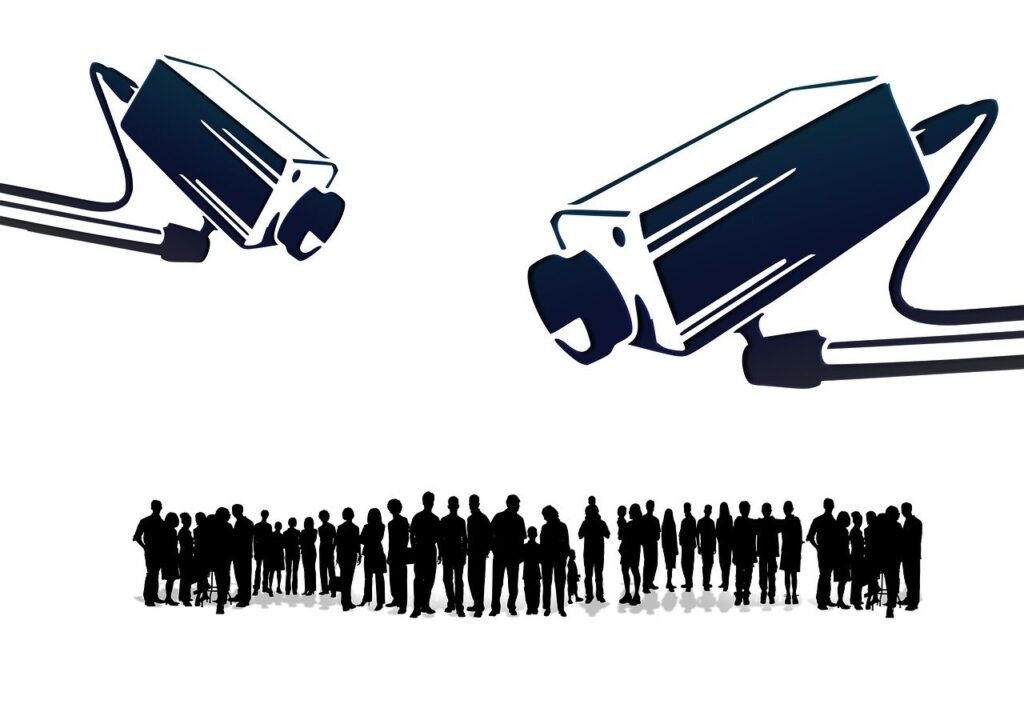
- March 25, 2025
- Sean Gellis
- 0
Welcome to FloridaProcurements.com (FlaProc), your authoritative resource for navigating Florida’s government contracting landscape, with particular focus on transportation and technology opportunities. FlaProc provides free, expert guidance to help companies identify and secure state contracting opportunities throughout Florida.
This resource is maintained by Attorney Sean Gellis of Gellis Law, PLLC, one of less than 75 attorneys Board Certified in State and Federal Government and Administrative Practice by The Florida Bar. Mr. Gellis brings unique insight to government contracting, having served as the Chief of Staff of the Florida Department of Management Services (DMS), General Counsel of the Florida Department of Transportation (FDOT), and Deputy General Counsel of the Florida Office of Insurance Regulation (OIR) – positions that provided direct oversight of technology initiatives and issues of statewide importance. His record in bid protest litigation reflects the sophisticated advocacy and strategic thinking he brings to government contracting matters, particularly in complex transportation and technology procurements. Sean also leads Procurement Insider, a confidential subscription service that provides technology vendors with strategic intelligence and insider analysis of Florida government opportunities. Learn more about transforming your approach to government contracting at www.gellislaw.com/procurement-insider
Digital Transformation or Digital Disruption? Unpacking Senate Bill 7026

In the labyrinth of government technology, reorganizations are often sold as silver bullets for structural inefficiencies. Yet when it comes to cybersecurity and digital services—areas where continuity and institutional knowledge are paramount—major organizational overhauls deserve particular scrutiny. Florida’s Senate is currently considering legislation that would fundamentally transform the state’s technology governance structure, and the implications extend far beyond administrative reshuffling.
The Great Reshuffling: What SPB 7026 Proposes
Florida Senate Bill 7026 aims to create a new agency called the Agency for State Systems and Enterprise Technology (ASSET) while simultaneously dismantling the current Florida Digital Service (FLDS) housed within the Department of Management Services (DMS). This represents far more than moving boxes on an organizational chart—it constitutes a seismic shift in how Florida manages its technology infrastructure, cybersecurity operations, and digital transformation initiatives.
The proposed legislation would place ASSET under the control of the Governor and Cabinet, creating a new executive agency with sweeping powers over state technology systems. The state chief information officer, currently positioned within DMS, would transfer to ASSET and serve as its executive director, bringing along current responsibilities but operating within an entirely new governance framework.
What makes this particularly noteworthy is the historical context: this would mark the third major reorganization of Florida’s technology governance in recent years. What began as the Agency for State Technology was transformed into the Division of State Technology, which then evolved into the Florida Digital Service. Each reorganization arrived with promises of better coordination and more effective oversight. Now, Floridians are potentially facing yet another comprehensive reinvention of the wheel.
The Cybersecurity Connection: Why This Matters Beyond Administrative Charts

The Florida Digital Service isn’t merely another government IT department pushing papers and managing email servers. It serves as the cybersecurity backbone of the state, protecting critical infrastructure and sensitive data from increasingly sophisticated threats that target everything from water treatment facilities to tax collection systems.
The proposed bill makes significant changes to cybersecurity governance in section 282.318, Florida Statutes, shifting responsibility for incident reporting from the Cybersecurity Operations Center to the state chief information security officer. Perhaps more concerning, the legislation would completely eliminate the Florida Cybersecurity Advisory Council (Section 22), removing an independent oversight and advisory body currently providing expertise and guidance from both public and private sectors.
These changes arrive at a particularly vulnerable moment when state governments nationwide face unprecedented cybersecurity challenges. Florida—with its expansive coastline, critical infrastructure, substantial elderly population, and position as a global tourism hub—presents an especially attractive target for cybercriminals, hacktivists, and hostile state actors. The state has already experienced significant incidents targeting water systems, municipal governments, and educational institutions. One must question whether organizational restructuring addresses or exacerbates these vulnerabilities.
Cabinet Structure: Less Oversight, Not More?

One of the most concerning aspects of the proposed legislation is moving technology governance to a cabinet structure. While superficially this might appear to provide greater visibility and accountability, the practical reality could prove quite different.
Cabinet agencies in Florida often receive less scrutiny than those under direct departmental control. With responsibility diffused among multiple constitutional officers—the Governor, Chief Financial Officer, Commissioner of Agriculture, and Attorney General—accountability becomes fractured rather than enhanced. Each cabinet member brings different priorities, expertise levels, and political considerations to technology governance questions.
In practice, cabinet agencies can sometimes become afterthoughts in day-to-day government operations, receiving meaningful attention only during quarterly cabinet meetings that typically focus on higher-profile issues. Technology governance requires consistent, expert attention—not periodic review by officials whose primary responsibilities lie elsewhere.
This diffused accountability structure potentially weakens oversight precisely when technology and cybersecurity demand more focused governance, not less. When everyone is responsible, sometimes no one is responsible.
A Deeper Look at the Organizational Changes

The bill creates an elaborate new structure that includes several divisions and offices:
- Division of Administrative Services
- Office of Information Technology
- Division of Enterprise Data and Interoperability (starting July 1, 2026)
- Division of Enterprise Security (starting July 1, 2026)
- Division of Enterprise Information Technology Services (starting July 1, 2026)
- Division of Enterprise Information Technology Purchasing (starting July 1, 2026)
- Division of Enterprise Information Technology Workforce Development (starting July 1, 2026)
Simultaneously, the legislation establishes multiple specialized workgroups covering everything from data interoperability to contract management. While specialization can provide valuable expertise, such elaborate structures risk creating information silos, bureaucratic turf battles, and decision-making bottlenecks—precisely when agility and cross-functional collaboration are most needed in technology governance.
Modern cybersecurity and digital service delivery require nimble organizations that can quickly adapt to evolving threats and technologies. The question remains whether creating more divisions and workgroups facilitates this agility or impedes it.
The Lengthy Transition: Governance in Limbo
Most of these changes wouldn’t take effect until July 1, 2026—creating a protracted transition period where responsibilities might become muddled and unclear. The bill provides that the current state chief information officer from DMS would serve as interim state chief information officer until the Governor and Cabinet appoint a permanent officer by January 2, 2026.
This creates almost a year of “lame duck” leadership during a critical time for technology governance. Historical precedent shows such transition periods often lead to organizational paralysis, with staff uncertain about future roles and leadership hesitant to make significant decisions or investments. Talented professionals often leave during such transitions, taking valuable institutional knowledge with them.
In cybersecurity particularly, this kind of uncertainty can create dangerous gaps. Threats don’t pause for administrative reorganizations, and ransomware attackers are unlikely to respect transition timelines.
The Revolving Door of Technology Governance
Perhaps the most telling aspect of this legislation is what it represents in Florida’s approach to technology governance. This would mark the fourth major organizational structure for state technology in recent years:
First came the Agency for State Technology, which was then restructured into the Division of State Technology, which transformed into the Florida Digital Service, and now potentially would become the Agency for State Systems and Enterprise Technology.
Each reorganization incurs substantial costs beyond the obvious expenses of new letterhead, signage, and websites. The less visible costs include lost institutional knowledge, disrupted strategic momentum, and diverted focus. When organizations undergo constant restructuring, they inevitably turn inward rather than focusing outward on emerging threats and opportunities. Staff spend time learning new reporting structures and procedures rather than advancing technological capabilities.
This pattern suggests Florida might be caught in a cycle of reorganizing rather than resolving fundamental challenges of technology governance. When facing persistent technology problems, the temptation for policymakers is often to change organizational charts rather than addressing more complex underlying issues like funding models, procurement processes, workforce development, or leadership capabilities.
What's Really Needed for Effective Technology Governance?

Effective technology governance requires several key elements that reorganizations alone cannot provide:
- Consistent leadership with appropriate technical expertise
- Adequate funding for both operations and modernization initiatives
- Streamlined procurement that can keep pace with technology changes
- Workforce development to attract and retain specialized talent
- Clear lines of accountability with appropriate oversight
While SB 7026 attempts to address some of these elements, the organizational churn itself undermines the stability needed for success. At a time when Florida needs to strengthen its cybersecurity posture and modernize legacy systems, another major reorganization risks diverting attention and resources away from these critical priorities.
The Path Forward

Florida’s technology challenges are real and pressing. Legacy systems need modernization. Cybersecurity threats grow more sophisticated daily. Workforce challenges persist in attracting specialized talent.
But the question remains: is creating ASSET the solution, or might it create more problems than it solves? Could enhancing the existing Florida Digital Service with clearer authority, better funding, and stronger leadership achieve the same goals without the disruption of another reorganization?
As this legislation moves forward, these are the questions lawmakers should be asking. Technology governance is too important to be caught in an endless cycle of reorganization. At some point, Florida needs to stop reorganizing its technology function and start empowering it to deliver results.
What do you think? Is another reorganization the answer to Florida’s technology governance challenges? Or is it time for stability and execution rather than structural change?
Sean Gellis is a Board Certified specialist in State and Federal Government and Administrative Practice with over a decade of government experience, including service as Chief of Staff of the Department of Management Services (DMS), General Counsel of the Florida Department of Transportation (FDOT), and Deputy General Counsel of the Florida Office of Insurance Regulation (OIR). Through Gellis Law, PLLC, he provides strategic counsel on government procurement, administrative law, and regulatory matters. Sean also leads Procurement Insider, a confidential subscription service that provides technology vendors with strategic intelligence and insider analysis of Florida government opportunities. Learn more about transforming your approach to government contracting at GellisLaw.com/Procurement-Insider.


